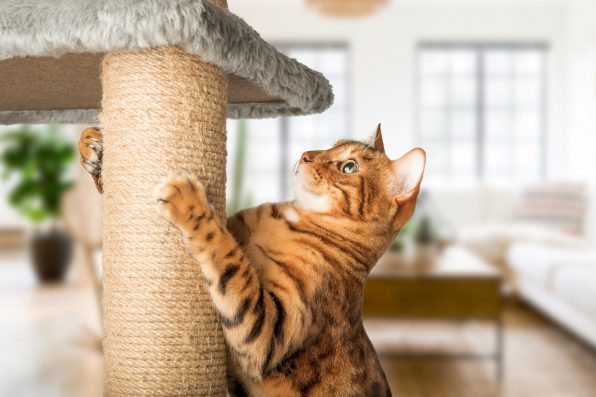Adjusting Your Cat’s Activity And Stress Levels At Home May Get Them To Stop Scratching Your Furniture, According To A New Study

If you’re a cat owner, you know that scratched-up furniture can be a common problem with feline pets. Even though scratching is a natural instinct for cats, it’s frustrating to see torn couches and cushions ripped to shreds in your home.
A team of researchers from Turkey, Portugal, and France have investigated the factors that cause unwanted scratching behavior in domestic cats. Certain factors, such as having young children at home, their activity levels, and their overall stress levels, contribute to your cat’s desire to claw at furniture. Some of these aspects can be adjusted to reduce scratching.
“Our findings can help caregivers manage and redirect scratching to appropriate materials, which could help foster a more harmonious living environment for both cats and their caregivers,” said Dr. Yasemin Salgirli Demirbas, the first author of the study and a veterinary researcher at Ankara University in Turkey.
The team asked over 1,200 cat owners in France to fill out an online survey about the daily routines, characteristics, and scratching behaviors of their cats. The French animal health company, Ceva Santé Animale, helped collect this data. The company also funded the study.
The results revealed that having kids at home, high levels of playtime, and nocturnal activity were associated with increased scratching. Additionally, owners who described their cats as “aggressive” or “disruptive” were naturally prone to scratch more.
The leading reason for unwanted scratching was stress. Small children in the home can heighten felines’ stress, causing them to scratch. However, the link between children in the home and increased scratching is not fully understood. More research is needed to learn about the connection.
Another stress-related factor is playfulness. When cats play for a long period of time, they can get more stressed because of the uninterrupted stimulation.
While some factors cannot be immediately changed, such as the presence of children or the personality of the cat, other environmental aspects can be modified. Ensure your cat has plenty of designated scratch posts in various areas of the home and nooks and crannies to hide in.
“Providing safe hiding places, elevated observation spots, and ample play opportunities can also help alleviate stress and engage the cat in more constructive activities,” Salgirli Demirbas said.

Svetlana Rey – stock.adobe.com – illustrative purposes only, not the actual cat
Also, cut down on the amount of playtime your cat engages in. Their play sessions should include short bursts of activity that imitate natural hunting scenarios.
This can help maintain their interest and reduce stress, ultimately working to lessen excessive scratching on furniture.
Making these changes can protect your precious furniture and even strengthen the bond you have with your pet.
Overall, the researchers hope that future research will aid in the development of more effective management strategies for cats’ scratching behavior.
The findings were published in Frontiers in Veterinary Science.
Sign up for Chip Chick’s newsletter and get stories like this delivered to your inbox.
More About:Animals





